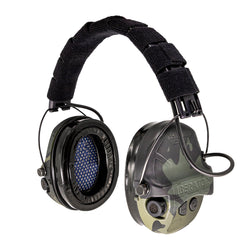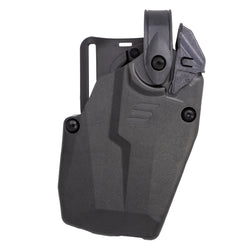That the United States Navy is history’s most powerful maritime force is beyond question. The US Navy has held that distinction since the first Essex-class aircraft carriers arrived in World War II’s Pacific Theater in 1943, along with the battleship USS Iowa. But the road to supremacy was long, with 168 years passing between the Continental Navy’s creation on October 13, 1775, and the Essex, Yorktown, and Iowa’s deployments.

The ensuing 82 years have witnessed the Navy’s global preeminence in power projection and trade protection. Let’s look briefly at the key milestones of the US Navy’s evolution into the force we know today.
The Continental Navy
John Adams was among those who advocated for a Continental Navy to go along with the recently authorized Continental Army in the fall of 1775. Many delegates to the Second Continental Congress were wary of creating a navy, believing it would signal the intent to take the offensive in what many still regarded as a defensive conflict aimed at reconciliation with Great Britain.
But word of a powerful new fleet, complete with five Royal Marine regiments, heading for American shores, and the threat of Royal Navy ships bombarding port cities, changed their minds. The first 10-gun American warship was authorized on October 13, 1775. More authorizations followed, along with the creation of naval regulations and codes of conduct in November. A Marine Corps unit to support the fleet was part of the process.
The Continental Navy, precursor to the US Navy, was born. Always understrength, like its land-based counterpart, the Navy nonetheless played a key role in the American Revolution, led by talented captains like John Paul Jones, who took the fight right into British waters.

The Naval Act of 1794
The new American Republic mistrusted standing military forces and so disbanded the Continental Army and Navy after the 1783 Treaty of Paris ended the Revolutionary War. But the early 1790s presented new threats, namely the wars of the French Revolution and the pirates from North Africa’s Barbary Coast.
France was the United States’ only European ally, but the French Revolution’s violent excesses made the alliance difficult, especially once the other European nations banded together to stop the revolutionary influence from spreading. The British Royal Navy still ruled the waves, blocking American merchant traffic to France and its colonial possessions. British and French privateers also preyed indiscriminately on American ships, making Atlantic trade a hazardous prospect.
The chaos emboldened the Barbary corsairs, who expanded their Mediterranean enterprises into the Atlantic, taking prizes from nations that did not pay them tribute. Some American leaders, including James Madison, wanted to pay the tribute and focus on American natural resources instead of trading with Europe.
But others insisted on a new United States Navy to protect the American coast and trade in the Atlantic. After much debate, Congress narrowly passed the Naval Act of 1794, authorizing six new armed frigates: the United States, Constellation, Constitution, Congress, Chesapeake, and President. President George Washington signed the act into law.
The Barbary Wars (1805-1815)
Action against the Barbary corsairs grew into the Barbary Wars of 1801-1815. Unlike its European counterparts, the young American nation refused to pay tribute to rogue North African states that terrorized Mediterranean trade. The new United States Navy operated against the pirates, winning victories at sea and blockading the port of Tripoli.

Though operations were interrupted by the War of 1812, fleet victories in 1815 led to treaties that ended Barbary depredations on American ships and all demands for tribute. The Barbary Wars created the first post-Revolutionary American war hero in Lieutenant (later Captain and Commodore) Stephen Decatur. The conflict also demonstrated America’s ability to fight, sustain, and win a war far from its shores and home waters.
The War of 1812
The US Navy was a major participant in America’s second war against Great Britain. The initial six frigates had grown into a sizeable fleet which fought the far more numerous and experienced Royal Navy to a standstill. Notable American victories were won on the high seas, Lake Erie, and Lake Champlain.

The USS Constitution distinguished herself with ship-to-ship victories over five British warships, including the Guerriere (August 1812) and Java (December 1812). Cannonballs from the Guerriere were observed bouncing off the Constitution during that battle, earning the ship its nickname “Old Ironsides.” The ship eventually went undefeated in combat, subduing all 33 of its opponents. The Constitution survives today as the world’s oldest commissioned warship, dating from its launch in 1797.
The United States, including the Navy, earned international respect by fighting the powerful British Empire to a strategic draw, fresh off the first defeat of Napoleon.
The Founding of the US Naval Academy
A professional force requires a professional officer corps. What became the US Naval Academy was founded as the Naval School on October 10, 1845. It occupied the grounds of the former US Army post of Fort Severn in Annapolis, Maryland, where it remains today.
The Academy grew from the first Nautical School established in 1819 by Commodore Arthur Sinclair aboard the frigate USS Guerriere, named for the ship captured by the Constitution in 1812. The US Naval Academy was, and remains, essential to the maintenance and growth of the Navy as a premier fighting force.

The American Civil War
The Navy played a major role in the American Civil War. A pivotal part of the Union’s “Anaconda Strategy” was the naval blockade of Confederate ports, strangling Southern exports of trade goods and imports of war materiel. Blockade runners ensured a trickle of commerce, but the blockade was overwhelmingly successful, crippling the Confederate economy and weakening its armed forces.
Major actions were fought at the March 1862 Battle of Hampton Roads, between the ironclads Monitor and Virginia and Captain David Farragut’s advance up the Mississippi River the next month, enabling the Union capture of New Orleans.
Farragut, now an admiral, also led the Navy’s attack on Confederate forces at the 1864 Battle of Mobile Bay, completely closing the port of Mobile, Alabama to blockade runners. Farragut reportedly gave the now-famous order, “Damn the torpedoes, full speed ahead!” at Mobile Bay, though whether he actually said it is disputed. He did, however, successfully take his ships through a Confederate minefield (mines were called “torpedoes”) to avoid the guns from a Southern fort.

The Navy also wrested control of the entire Mississippi River from the Confederacy in 1862-63 under Captain David Dixon Porter. Porter’s ships were instrumental in General Ulysses S. Grant’s 1863 victory at Vicksburg, which was the Civil War’s turning point.
The Battle of Manila Bay (1898)
The Spanish-American War was the US Navy’s first action against a foreign power since the Mexican War of 1846-48. Admiral George Dewey led the Navy’s Asiatic Squadron against the Spanish Fleet in the Philippines’ Manila Bay on May 1, 1898.
Spanish Admiral Patricio Montojo knew he was in trouble. His ships were in poor repair, with one of his cruisers having to be towed into battle. Dewey’s ships, however, were well-maintained and crewed by professional sailors. Montojo anchored his fleet in shallow water near the Cavite Peninsula, hoping it would help rescue any sailors who went into the water.

Dewey’s mobile, well-trained squadron literally ran rings around the stationary Spanish fleet, eventually sinking every ship without losing even a single man themselves. So outclassed were the Spanish that Dewey retired to check his ammunition supply, allowed his sailors to eat lunch, then returned to finish the job afterward. Manila Bay remains the most complete victory in the US Navy’s history and opened the door to America’s lasting presence in the Western Pacific.
The “Great White Fleet” Sails Around the World (1907-1909)
President Theodore Roosevelt was a major proponent of sea power. In 1907, he decided to showcase American naval strength by embarking the 16 new battleships of the Atlantic Fleet on an around-the-world goodwill tour. The ships were all painted white, with gilded scrollwork on their bows, leading to their being dubbed the “Great White Fleet,” though that name was not applied until after the globe-spanning cruise was over.

14,000 sailors made the 43,000-mile trip, visiting South America, Mexico, San Francisco, Hawaii, New Zealand, Australia, the Philippines, Japan, India, and Egypt, before dispatching two ships to render aid to earthquake victims in Sicily. The fleet then proceeded to Italy and Gibraltar before heading home to Hampton Roads, Virginia, where President Roosevelt reviewed the passing ships.
Despite numerous mechanical problems that plagued all early dreadnought-style ships, the fleet’s voyage announced the United States as a rising naval power on the global stage.
The Great War
The United States stayed out of the First World War until aggressive German submarine warfare and inept political machinations drove Congress to declare war on Germany in April 1917. The Navy missed the few big sea battles but was instrumental in the Allied war against the German U-boat menace.

The Navy gained valuable experience in convoy tactics and escort ship design, as well as anti-submarine warfare techniques. That experience paid dividends in the next war, when German and Japanese submarines posed a significant threat to merchant and combat shipping alike.
The Rise of the Aircraft Carrier (1920-1941)
The US Navy was a leader in developing naval aviation and the aircraft carrier between the World Wars. Despite resistance from the battleship admirals, the Navy launched its first experimental carrier, USS Langley (CV-1), in 1920. The Langley allowed the Navy to develop carrier-capable aircraft and a coherent doctrine for their use, as well as determine the necessary features and requirements for an operational fleet carrier.

The first fleet carrier, USS Lexington (CV-2) was launched in 1925, further expanding American carrier capability. The Navy began World War II with four fleet carriers and one smaller carrier, USS Ranger, which served in the Atlantic Fleet. The game-changing Essex-class carrier was designed in 1938, with orders placed in 1940. This foresight allowed the Navy to begin WWII with a carrier capability only exceeded by that of Japan, though the groundwork was already laid to quickly surpass the Japanese.
World War II
World War II saw the US Navy convincingly win history’s largest, most far-flung naval war against Japan, while simultaneously providing the bulk of the forces that beat the Germans in the Battle of the Atlantic. Despite the early setback at Pearl Harbor, the Navy fought the numerically superior Imperial Japanese Navy to a draw in the Coral Sea, while winning smashing victories at Midway, the Philippine Sea, and Leyte Gulf.
Sandwiched in between was the grueling Solomon Islands Campaign, where the Navy’s cruisers and destroyers learned to fight at night, eventually using radar and improving tactics to beat the Japanese at their own game. Victory in the Solomons carried an enormous cost. Engagements like the Battle of Savo Island, the Navy’s worst defeat, and the Battles of Cape Esperance, Santa Cruz, and the Naval Battle of Guadalcanal cost ships and men. But the Navy learned lessons.

American submarines throttled Japanese merchant traffic, virtually cutting off the raw materials needed to power Tokyo’s war industries. By mid-1944, roving American carrier task forces raided at will, utterly destroying Japanese carrier aviation in June at the Philippine Sea.
After suffering heavy merchant shipping losses in 1942, the US and Royal Navies all but eliminated the German U-boat threat by late 1943 using improved escort tactics coupled with radar and superior intelligence work.
World War II was an amphibious war in many respects. No nation even approached the US Navy’s ability to transport, land, and support large amphibious forces over great distances in the Pacific, Atlantic, and Mediterranean.
The Navy developed logistical processes so thoroughly that, by mid-1944, it was cheaper and easier to scrap damaged or worn-out aircraft and replace them than it was to fix them. Entire fleets could operate for months at a time thanks to effective seaborne refueling and replenishment processes. No other navy could match that capability.

When the fighting ended in 1945, the US Navy was more powerful and capable than all the world’s other navies combined, unmatched in its scope, technology, and operational experience. And frankly, it wasn’t even close, in quantity or quality.
The SEALS (1962)
The Navy had long employed combat swimmers, or frogmen, for reconnaissance and sabotage missions, as well as clearing beach obstacles in World War II. The 30 Underwater Demolition Teams (UDT) were instrumental in American amphibious operations and other specialized missions until the war’s end.
An American naval officer named Roy Boehm had seen these underwater warriors while assigned to destroyers as an enlisted man during the Pacific War. But his vision extended beyond beach reconnaissance and sabotage. Boehm conceived a force of elite waterborne naval commandos, who could perform full-fledged combat missions on their own.

After advocating for years, Boehm got his chance in 1962, when he was ordered to form and command the first two SEAL (SEa Air Land) Teams, complete with mission profiles and training regimen. The SEALs proved their worth in river operations in Vietnam, establishing their place in the American special warfare framework. The remaining UDT Teams formally merged with the SEALs in 1983, combining their missions.
Operation Neptune Spear (2011)
The SEALs once again proved themselves when SEAL Team Six raided the Abbottabad, Pakistan, compound of Osama bin Laden, killing the terrorist leader on May 2, 2011. The raid was the culmination of a years-long quest following the 9/11 tragedy.
SEAL Team Six, created by the famous (or infamous) Dick Marcinko in 1980, is specially trained for counter-terrorism missions. It was the perfect tool for that mission, bringing some closure to the American public.
A World Class Force
The United States Navy remains the world’s premier maritime force, able to project power globally. But new challenges arise. The need to rapidly reinforce Europe against a Soviet invasion, while dealing with Russian nuclear submarines, has faded, as has the asymmetrical approach to the Global War on Terror.

The Navy is pivoting back to a familiar theater in the Southwest Pacific as China pursues a blue water navy and rattles its saber in the South China Sea. New technologies require doctrinal changes enabling the Navy to fight and win in a modern maritime environment. If history is any indicator, the challenges will never cease, but the Navy will adapt, drawing on centuries of tradition and experience. That tradition and experience seem more important now than ever.

This article is part of our series honoring the U.S. Navy’s 250th birthday—see the other stories in the series for more history and insights.
Origins of the U.S. Navy
- 13 October 1775: The Birth of a Sea Power.
- John Paul Jones: Father of America’s Navy
- The History of the U.S. Navy’s First Six Frigates
- U.S. Naval Battles of the Revolutionary War
Navy Pioneers & Heroes
- History of U.S. Naval Infantry
- Forged in Fire: The Origins of the Navy SEALS
- Unsung Heroes of the U.S. Navy
Naval Hardware
Honoring the Legacy











